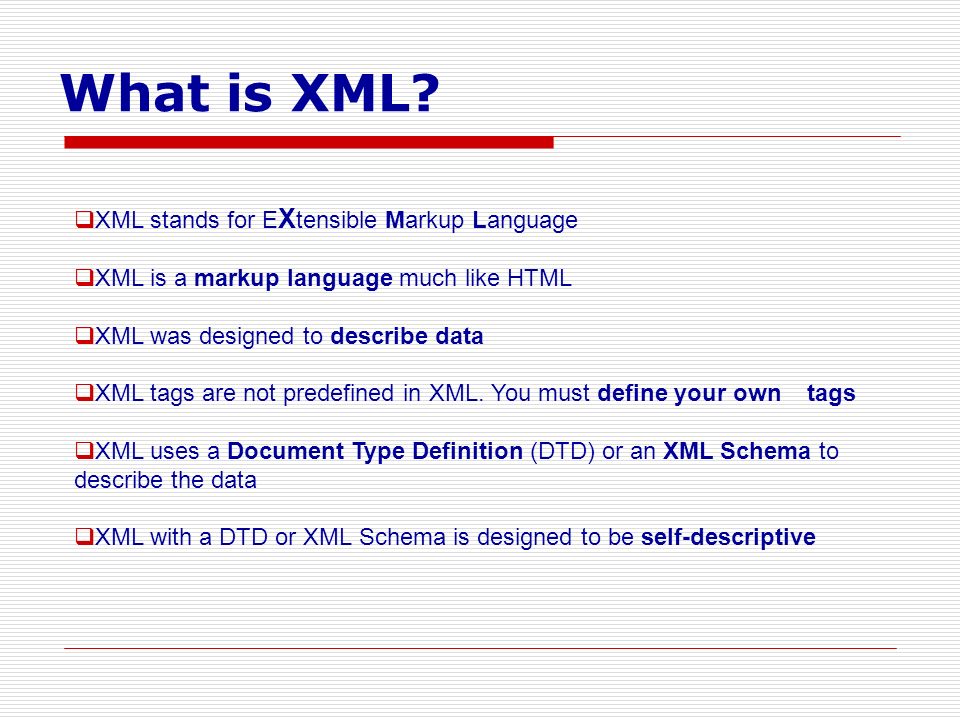What is XML? An Introduction to the Extensible Markup Language
telcomatraining.com – XML, or Extensible Markup Language, is a widely used data format that plays a critical role in enabling data exchange across diverse platforms and applications. Designed to be both human-readable and machine-readable, XML serves as a versatile tool for structuring, storing, and sharing data. But what exactly is XML, and why is it so important? This introduction will explore its key features, use cases, and benefits.
Understanding XML
XML stands for Extensible Markup Language, a standard created by the World Wide Web Consortium (W3C) in 1998. Its primary purpose is to describe and structure data in a way that is easy to interpret and exchange. Unlike HTML, which is used to define the structure and presentation of web pages, XML focuses exclusively on organizing and transporting data.
XML is considered “extensible” because it allows users to define their own tags and document structures. This flexibility makes it a powerful tool for various applications, including web development, data storage, and integration between systems.
Key Features of XML
- Simplicity
XML documents are plain text files that use a tree-like structure of nested elements. This simplicity ensures that data is both readable and accessible. - Self-Descriptive
XML documents are self-descriptive, meaning the tags clearly convey the meaning of the data. For example:<book> <title>Introduction to XML</title> <author>John Doe</author> </book> - Platform Independence
XML is platform-agnostic, making it ideal for exchanging data between systems running on different hardware or operating systems. - Extensibility
Users can define custom tags and attributes, providing flexibility for domain-specific applications. - Internationalization
XML supports Unicode, making it compatible with multiple languages and scripts, ensuring global accessibility. - Validation
XML documents can be validated against a Document Type Definition (DTD) or XML Schema Definition (XSD) to ensure they conform to a predefined structure.
Use Cases of XML
XML is used in a wide range of industries and applications. Some common examples include:
- Web Services
XML is a core component of web services, such as SOAP and RESTful APIs. It facilitates data exchange between clients and servers in a standardized format. - Configuration Files
Many software applications use XML for configuration files, as it allows easy editing and parsing of settings. - Data Interchange
Industries like finance, healthcare, and publishing rely on XML to share data between systems. For example, the publishing industry uses XML formats like DocBook for content structuring. - RSS and Atom Feeds
XML powers RSS and Atom feeds, enabling the syndication of news and blog updates. - E-Commerce
In e-commerce, XML is used to structure product catalogs, orders, and transaction data for seamless integration between platforms.
Advantages of XML
- Human and Machine Readability
XML’s straightforward syntax ensures that both humans and machines can easily interpret its data. - Interoperability
Its platform-independent nature allows seamless communication between systems and applications. - Scalability
XML documents can grow in complexity while remaining manageable, making it suitable for projects of all sizes. - Longevity
As a standard format, XML ensures that data remains accessible and usable over time, even as technology evolves. - Integration
XML facilitates integration between different technologies, such as databases, programming languages, and web services.
Challenges of XML
While XML offers numerous benefits, it also comes with some challenges. Its verbosity can lead to larger file sizes compared to other data formats like JSON. Additionally, parsing XML can be resource-intensive for complex documents.
Conclusion
XML remains a cornerstone of modern data exchange and application development. Its flexibility, readability, and compatibility make it indispensable for businesses and developers alike. Whether you’re working with web services, software configuration, or data storage, understanding XML is a valuable skill in the digital age. By mastering this versatile language, you can unlock new opportunities to streamline data handling and integration in your projects.







